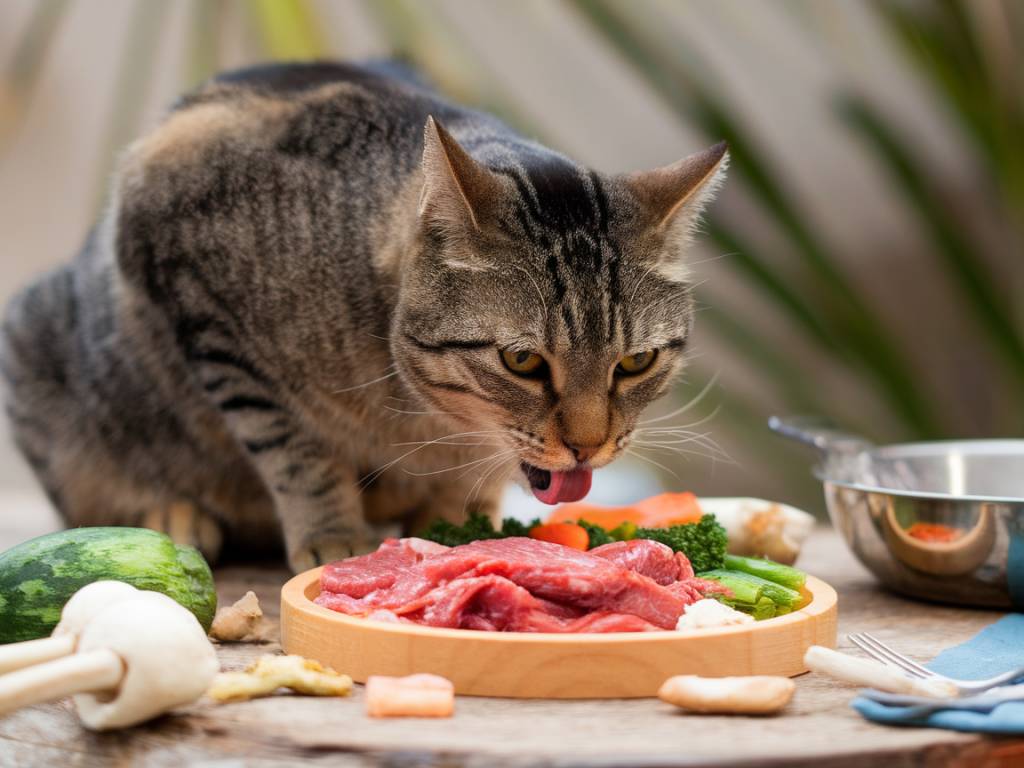Understanding the Basics of BARF Diets
Biologically Appropriate Raw Food (BARF) diets have gained significant traction in recent years among cat owners searching for a more natural feeding regimen. The BARF diet concept revolves around feeding cats raw meat, bones, and organs, mirroring what their ancestors might have consumed in the wild. Understanding this diet begins with recognizing its origins and intention to promote more holistic health for domestic felines.
Proponents of BARF diets assert that this approach can improve a cat’s coat, digestion, and energy levels, while reducing incidences of obesity and other lifestyle-related diseases. However, it’s crucial to recognize that raw feeding isn’t without its risks and demands a thorough understanding to execute safely. Before you make the switch, it is essential to delve into the nuances of raw diets for cats.
Key Nutritional Components
A well-balanced BARF diet for cats comprises several critical nutritional components:
- Muscle Meat: This should form the bulk of your cat’s raw diet. Chicken, turkey, and rabbit are popular choices.
- Bones: Cats require calcium for bone health, which can be naturally sourced from raw bones. Use caution to avoid cooked bones, as these can splinter.
- Organs: These are nutrient-dense parts of the diet and should include liver and heart to provide essential vitamins and minerals.
- Supplements: To ensure complete nutrition, consider adding taurine (an essential amino acid for cats), fish oil (for Omega 3 and 6 fatty acids), and a multi-vitamin supplement.
- Vegetables: Although cats are obligate carnivores, small amounts of finely chopped vegetables can provide fiber and micronutrients.
Safe Handling Practices
Feeding a BARF diet involves the risk of exposing both you and your cat to harmful pathogens present in raw meat. Therefore, safe handling practices are paramount:
- Clever Buying: Source meat from reputable suppliers who follow strict hygiene standards. Organic or grass-fed options are often a safer bet.
- Hygiene is Key: Always wash your hands, cutting surfaces, and utensils thoroughly with hot water and soap before and after preparing your cat’s meals.
- Freezing: Freeze meat for a minimum of three days before preparing, to help eliminate some parasites.
Transitioning to a BARF Diet
Switching to a raw food diet requires careful consideration and a gradual process. Abrupt changes can upset your cat’s digestive system. An ideal transition might look like this:
- Start Slowly: Introduce small portions of raw food alongside their usual meal. Gradually increase the amount over a few weeks.
- Observe and Adjust: Watch for any adverse reactions such as diarrhea or vomiting. Adjust the diet composition or consult with a veterinarian if issues arise.
- Mix It Up: Offer different types of meats and organs to ensure a balanced nutrient profile.
Recognizing the Risks
Despite its potential benefits, feeding a raw diet involves risks that must be addressed:
- Bacterial Infections: Salmonella and E. coli are pathogens that may be present in raw meat and can pose health risks to both cats and their owners.
- Nutritional Imbalances: An imbalanced diet can lead to deficiencies or excesses in essential nutrients, impacting a cat’s overall health.
- Bone Hazards: Although raw bones are generally safe, inappropriate bone size or type can lead to choking or digestive obstructions.
Consulting a Veterinarian
Before fully committing to a BARF diet, it is wise to consult a veterinarian who can provide personalized guidance and help you create a balanced meal plan. Some veterinarians may have reservations about raw feeding due to its potential risks, so finding a professional familiar with BARF diets could be beneficial. Regular veterinary visits for check-ups and weight monitoring are advisable to ensure that the diet is working well for your pet.
Monitoring Your Cat’s Health
Once your cat is on a BARF diet, observation is key to ensuring it thrives on this new regimen:
- Weight Monitoring: Regularly weigh your cat to ensure it maintains an ideal weight. Adjust meal portions as necessary.
- Behavior and Energy Levels: Noticeable changes in energy, behavior, or coat condition can indicate nutritional imbalances.
- Dental Health: While some raw feeders praise improved dental health, continued vigilance is necessary. Regular teeth brushing is still recommended.
Creating a Reliable Feeding Routine
Establishing a reliable BARF diet routine will make the feeding process easier and more sustainable:
- Meal Prep: Prepare meals in advance, using portions suited for freezing. This reduces daily preparation time and maintains freshness.
- Consistent Feeding Schedule: Stick to regular feeding times to support digestion and maintain your cat’s metabolism.
- Portion Control: Measure food accurately and adjust based on physical activity levels and body condition, consulting your veterinarian periodically.
Raw feeding via a BARF diet for cats can offer benefits aligned with feline natural dietary needs. However, it requires diligent preparation, guidance from a knowledgeable veterinarian, and an attentive eye to ensure your cat gains the intended benefits without unnecessary health risks. As you navigate this path, embracing the latest research and resources will aid you in providing enriched, balanced nutrition tailored to your feline friend’s unique needs and lifestyle.
For pet owners who are passionate about their cats’ health and well-being, exploring a BARF diet can be an enlightening journey, fostering a deeper connection with your furry companion. Remember, each cat is unique and observing how your feline responds to its diet will pave the way for a fulfilling and healthy life together. Safe feeding!
Lisa Tissed

